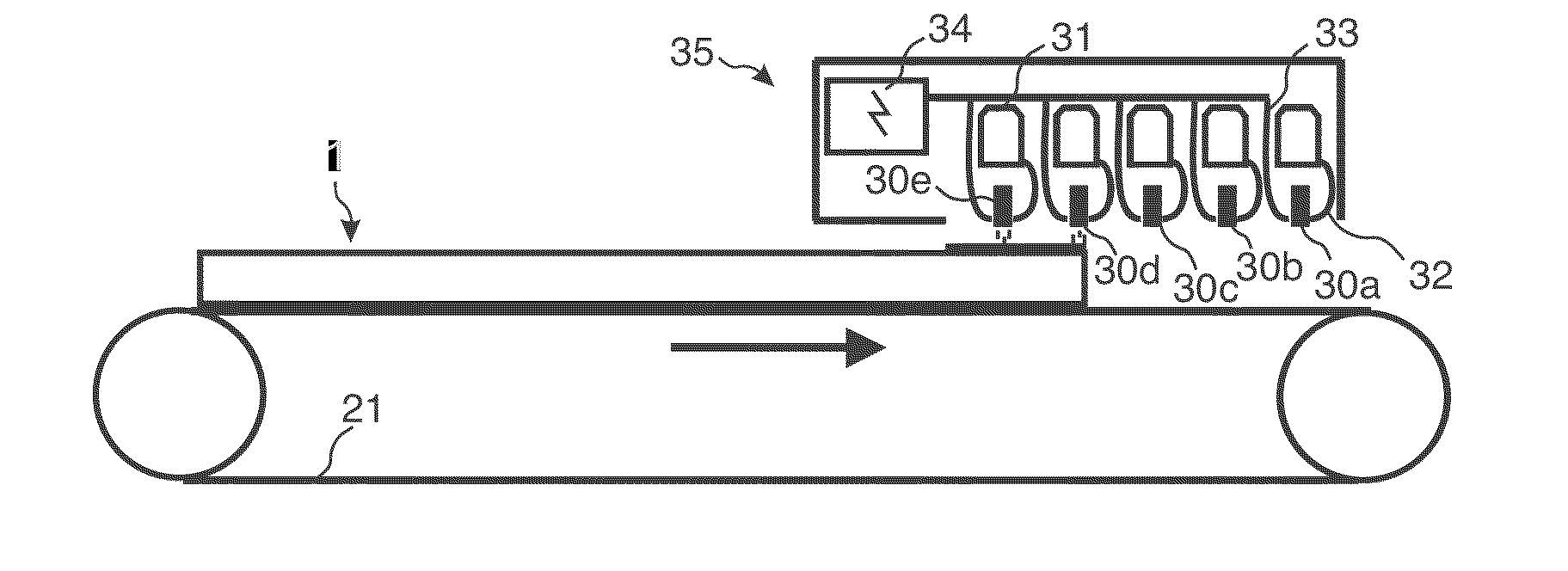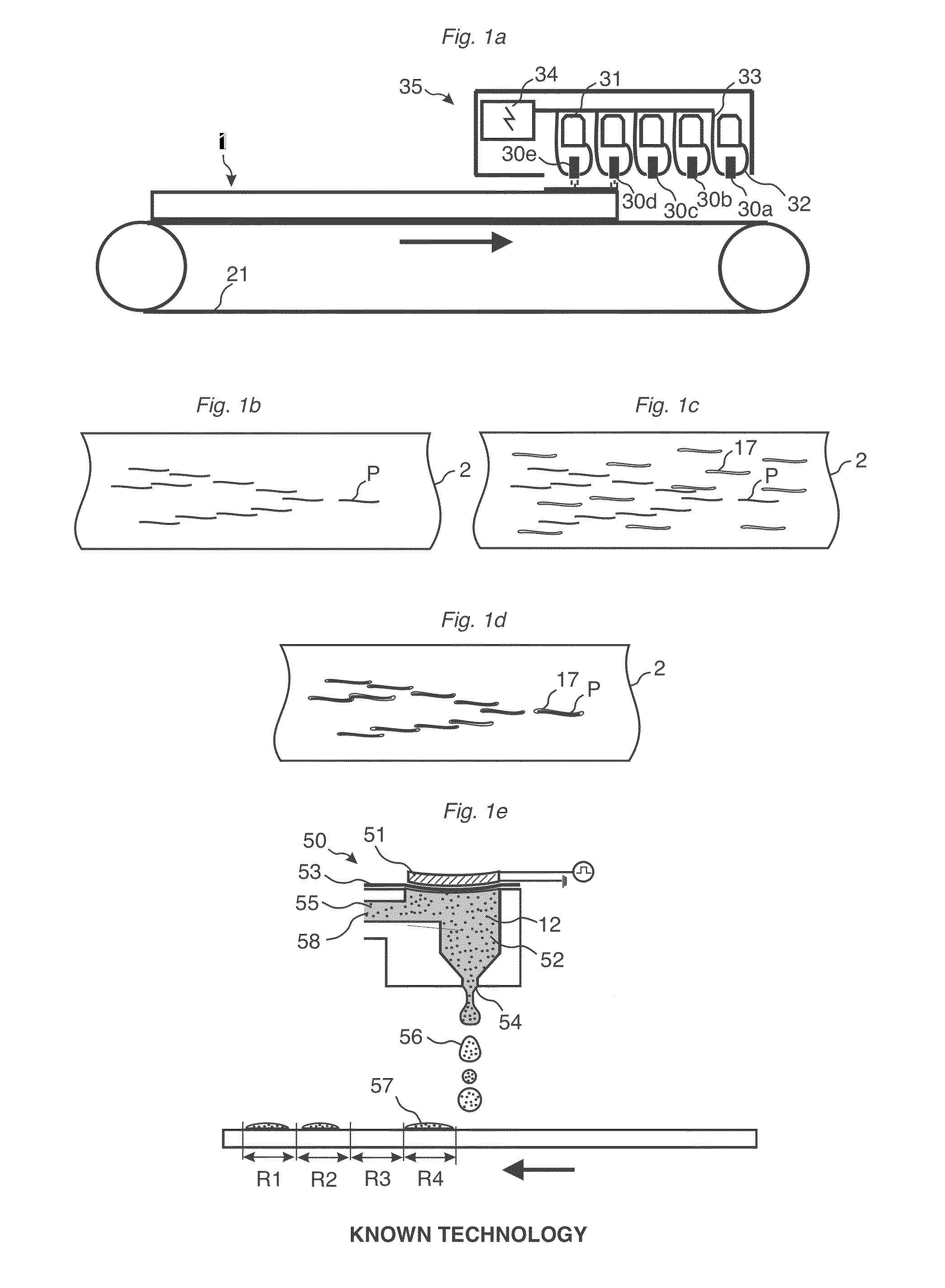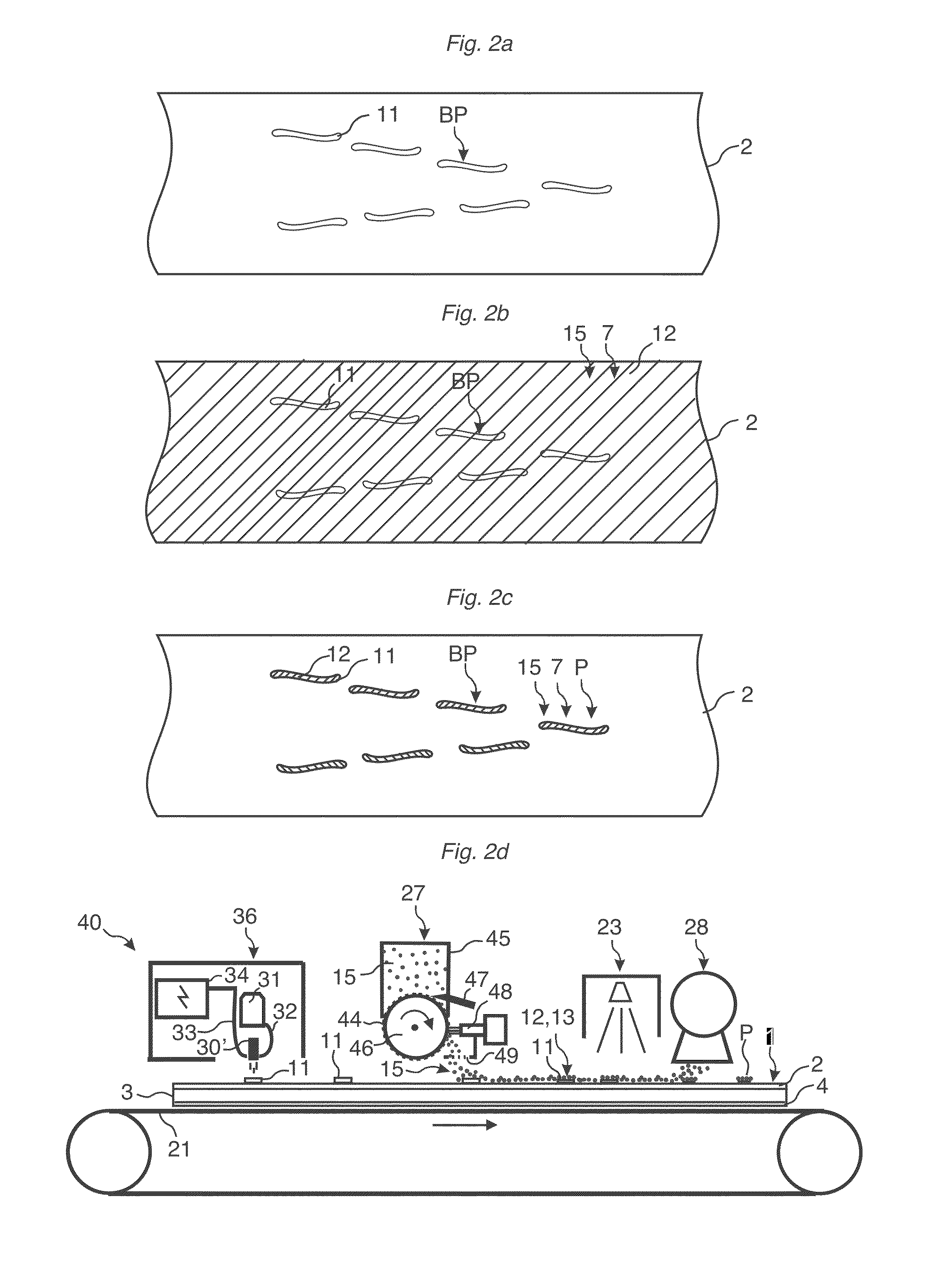Digital printing and embossing
- Summary
- Abstract
- Description
- Claims
- Application Information
AI Technical Summary
Benefits of technology
Problems solved by technology
Method used
Image
Examples
example 1
Dry Ink Comprising Spray Dried Melamine
[0303]Dry ink powder was produced by mixing 50% (weight) spray dried melamine particles (Dynea 4865) having an average size of about 100 microns and 50% black colour pigments (Printex). The mixing was made in 80% humidity. The mix was thereafter dried in 30% humidity such that the pigments were bonded to the melamine particles. The melamine particles coated by pigments were sieved with a 150 micron net to remove oversized particles. A 50 microns net was thereafter used to remove undersized particles. Black dry ink powder comprising macro colourants with a particle size of about 50-150 microns was obtained.
example 2
Dry Fibre Based Ink
[0304]Dry ink powder was produced by mixing 20% (weight) spray dried melamine particles, 20% brown colour pigments and 60% wood fibres of pine with an average length of about 0.2 mm and a thickens of about 0.05 mm. The mix was applied as 1 mm thick layer by scattering equipment on a steal belt. The powder mix was thereafter heated and moisture was applied by steam from deionized water. The mix was dried by hot air such that a hard stabilized powder based surface layer was obtained with a semi cured melamine binder. The dried layer was removed from the belt by scraping and the dry particles were milled and sieved into dry ink colourants comprising a wood fibre body with a surface covered by pigments bonded to the surface of the fibres by the semi cured melamine resin.
example 3
Digital Binder and Powder Print
[0305]A powder mix of 300 g / m2 comprising wood fibres, melamine particles, brown colour pigments and aluminium particles was applied by scattering equipment on an 8 mm HDF core. The mix was sprayed with deionized water and dried by IR light such that a hard stabilized powder based surface with a brown basic colour was obtained. The panel with the stabilized powder surface was put on a conveyer and displaced under a digital Piezo print head. The digital print head applied drops of blank ink comprising mainly water on the stabilized surface and printed a transparent liquid wood grain pattern on the basic brown colour surface. The melamine under the transparent pattern melted when the digital coating Piezo head applied the water drops. Dry ink comprising spray dried melamine particles coated with pigments, as described in example one, was in a second step scattered over the whole surface and the transparent pattern. The panel was thereafter displaced by a...
PUM
| Property | Measurement | Unit |
|---|---|---|
| Length | aaaaa | aaaaa |
| Structure | aaaaa | aaaaa |
| Thermosetting | aaaaa | aaaaa |
Abstract
Description
Claims
Application Information
 Login to View More
Login to View More - R&D
- Intellectual Property
- Life Sciences
- Materials
- Tech Scout
- Unparalleled Data Quality
- Higher Quality Content
- 60% Fewer Hallucinations
Browse by: Latest US Patents, China's latest patents, Technical Efficacy Thesaurus, Application Domain, Technology Topic, Popular Technical Reports.
© 2025 PatSnap. All rights reserved.Legal|Privacy policy|Modern Slavery Act Transparency Statement|Sitemap|About US| Contact US: help@patsnap.com



